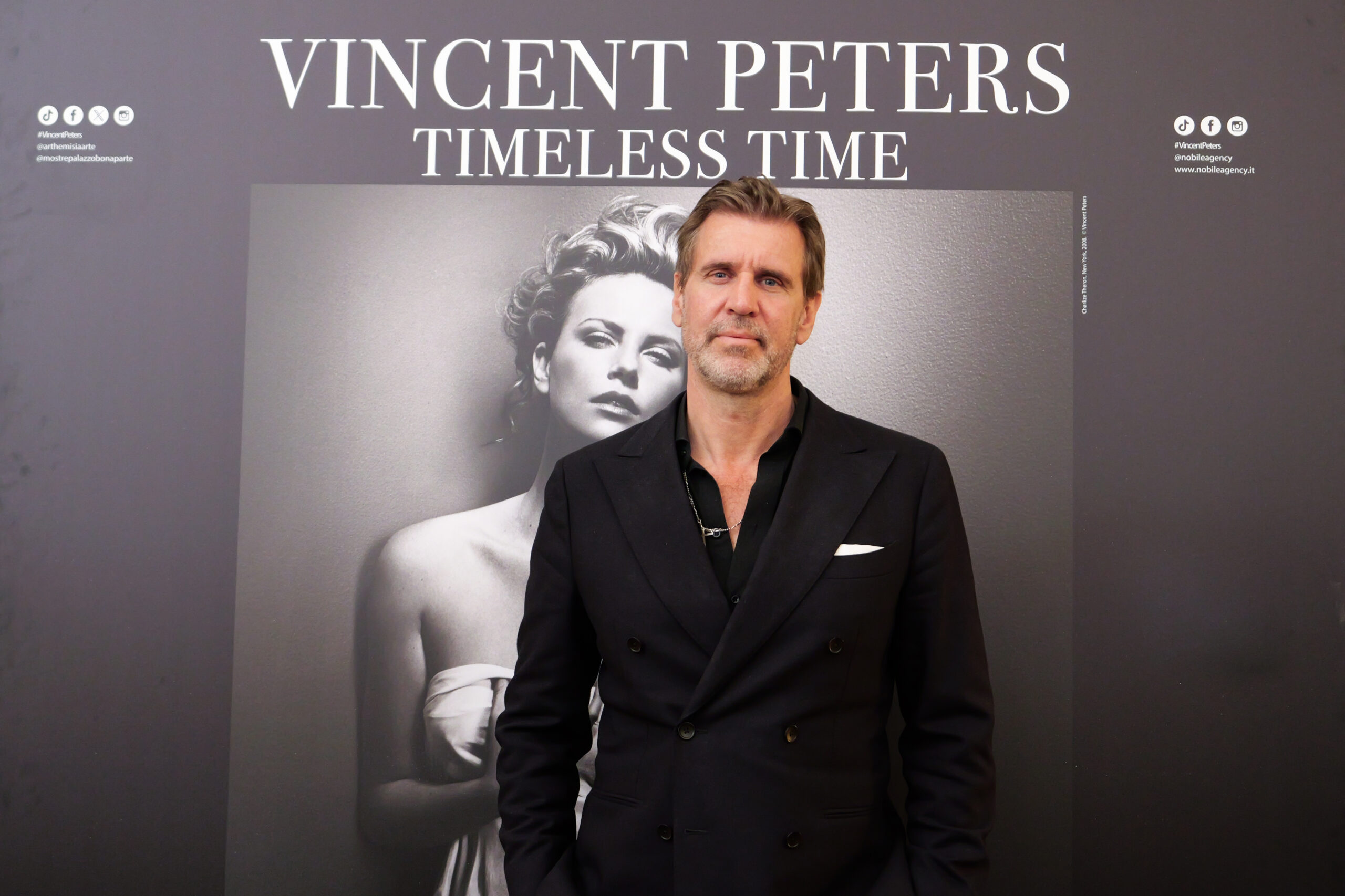di Patrizia Vallone
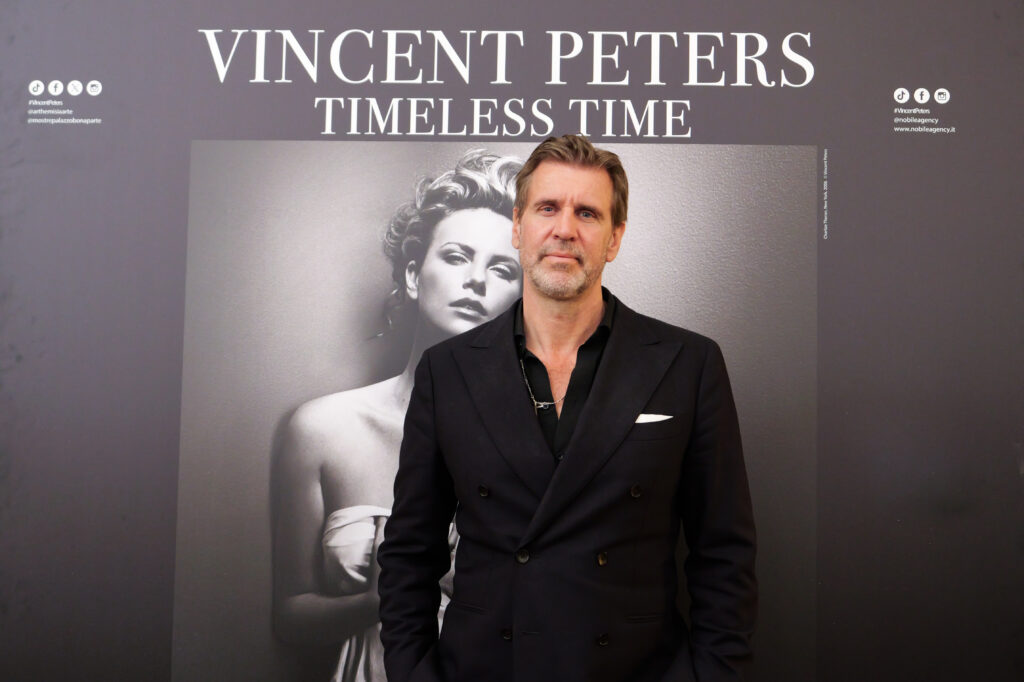
Città mese’s readers will have noticed two recent reports about “Vincent Peters. Timeless Time,” an exhibition of the German photographer’s works, currently being held at Palazzo Bonaparte, in Rome, through August 25. (The show first opened in January 2023, in Milan, then moved to Bologna, and ultimately reached Rome in May 2024.)
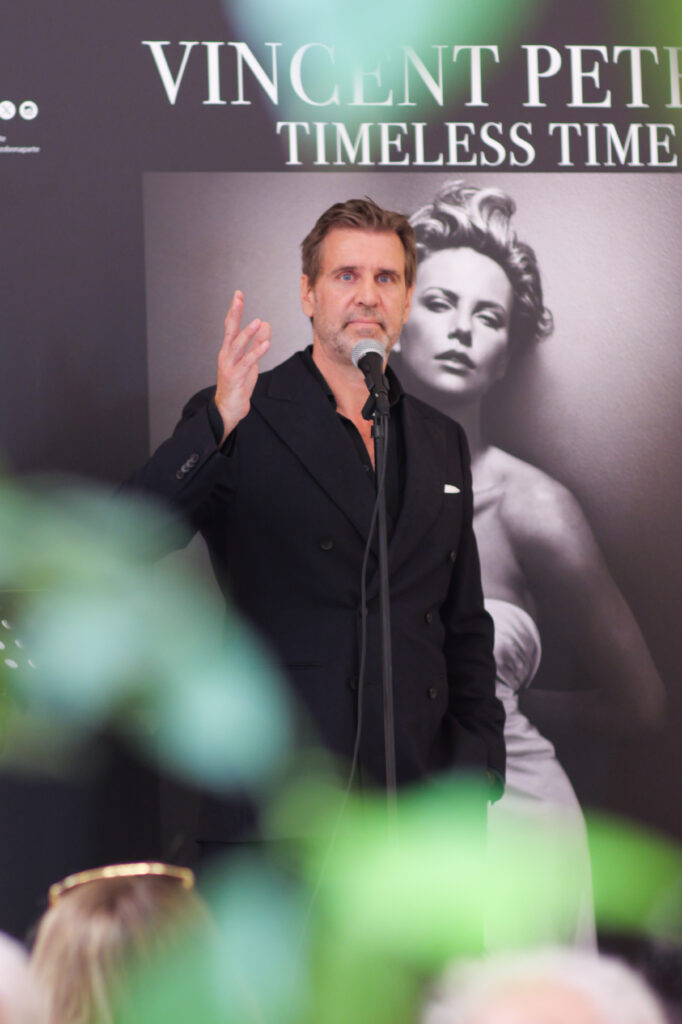
This time, I’ll give an account of the tour the artist himself gave a group of visitors to his show a few days ago; he then granted me an interview, which you can read here https://www.cittamese.it/2024/08/21/vincent-peters-in-rome-part-two-the-interview/
Peters, who is fifty-five, was wearing an elegant double-breasted gray suit ‒ no tie ‒ when he met the group with a smile, excusing himself for not speaking much Italian, and promising to learn it soon. (My feeling is that he speaks and understands it more than he admits to.) In English, he entertained us with anecdotes and fun facts, talking lightly and captivatingly about photography and much else.
The exhibition consists of ninety photographs of women and men ‒ studio models and celebrities ‒ shown in poses and portraits that pay tribute to the great Italian art of the past and to Italian neorealist films such as those of Vittorio De Sica and Luchino Visconti. In the subjects’ poses and apparel one can recognize Renaissance Madonnas, Michelangelo’s Pietà, or stills from Renzo Rossellini’s movies; it seems to me that other influences are at play too, such as Edward Hopper’s enigmatic paintings and Picasso’s fragmented portraits.
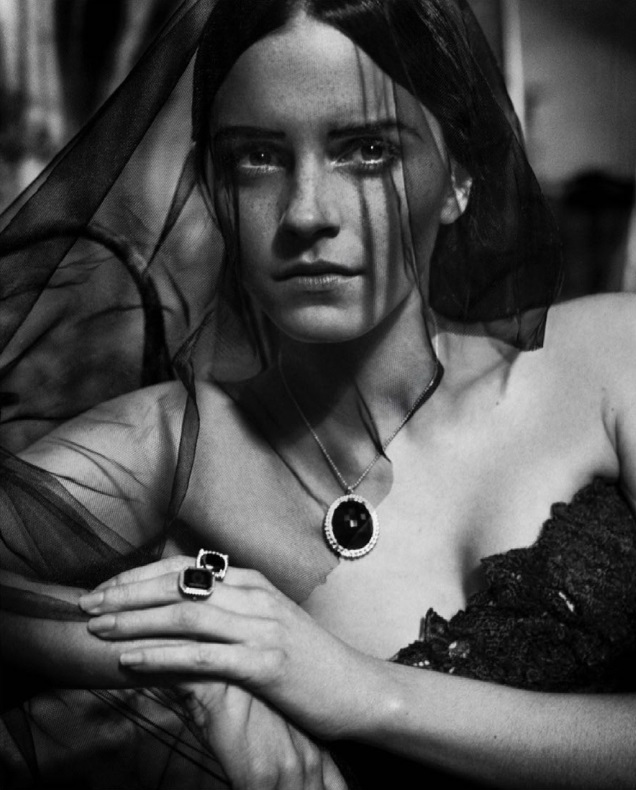
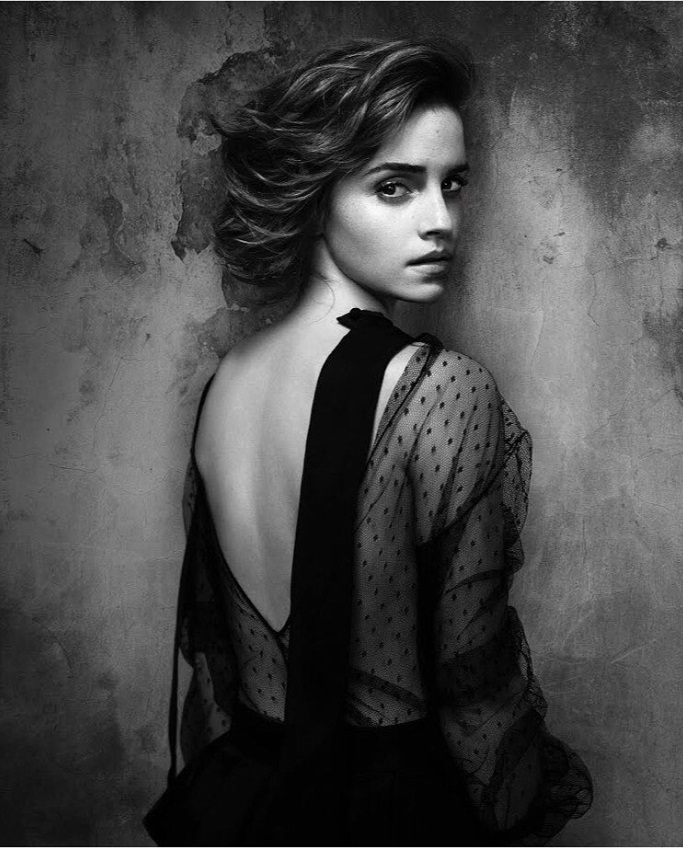
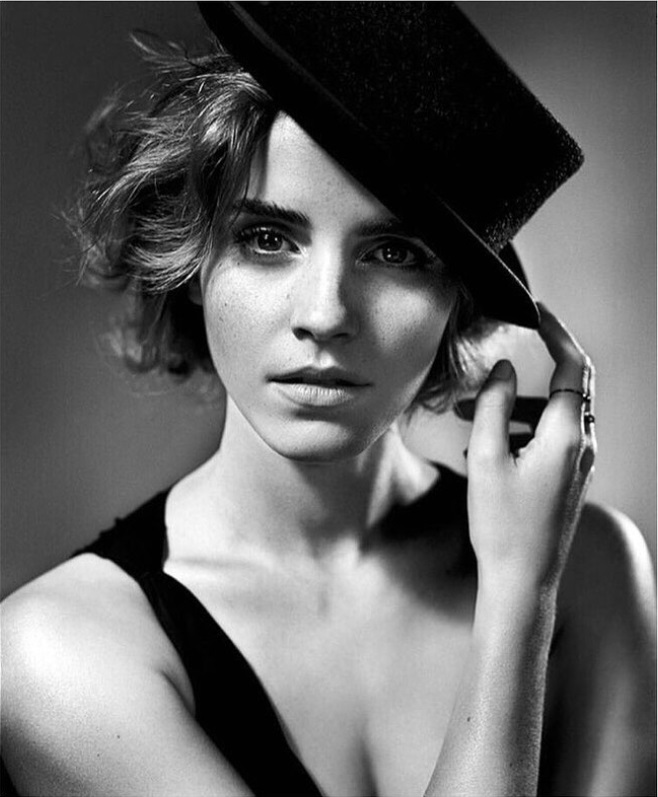
Peters’s photos ‒ shot on analog film in solemn black and white ‒ are suffused with a vivid and tangible light that accentuates the features of his subjects. In the models’ gaze we catch a glimpse of worlds which seem to be distant, unreachable and mysterious, but are laden with unspeakable secrets and grief.
The nude bodies ‒ never vulgar, never allusive ‒ exalt female beauty, evoking ancient Greek statues or paintings of bygone times. The images are dense, substantial, similar to sculptures. Blacks and grays are clear-cut, as if rendering brushstrokes full of color, while the whites distribute light and reflections in unlikely spots, making the subjects leap out of the frame like bas-reliefs to interact with the viewer.
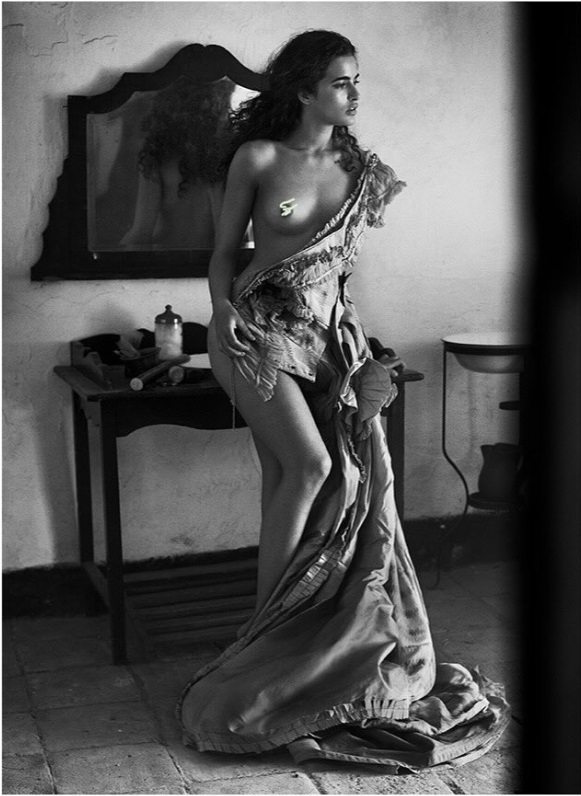
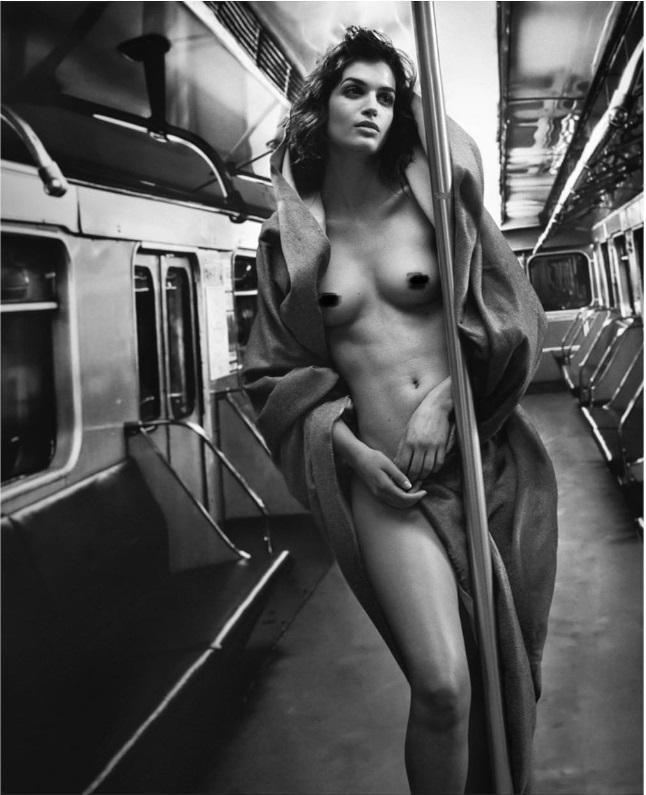
The poses seem to be frozen in the instant it took for the camera shutter to be released ‒ 1/125th of a second ‒ during which “timeless time” stopped, then started up again to live on in the imagination of the observer.
As far as I’m concerned, this exhibition uncovered emotions and horizons from my past that I had tucked away and forgotten; it brought to light recollections of events buried deep in my consciousness and which I’d thought had evaporated and been lost forever. The story of my life moves on, enriched by the memories that helped me become who I am today.

“We live in a time in which everybody is a photographer,” Peters began. “Everybody has a smartphone and everybody takes pictures of everything and anything. Just to give you an idea, more pictures are taken in a couple of hours in Rome than in the entire history of photography. In the past, to notify their existence to the world, people would write ‘I was here’ on walls or trees. Today, they take photographs.
Since photography’s very beginning, heads of state, rulers and public figures have made use of it to convey a certain image of themselves. In this sense, photography has been able to influence the masses, and, for better or worse, it has also been, and still is, wielded as a political weapon. We have glaring examples of this in front of our eyes every day, as newspapers show us pictures of devastating wars alongside photos of celebrities triumphantly posing on the red carpet.
This is photography’s huge power.”
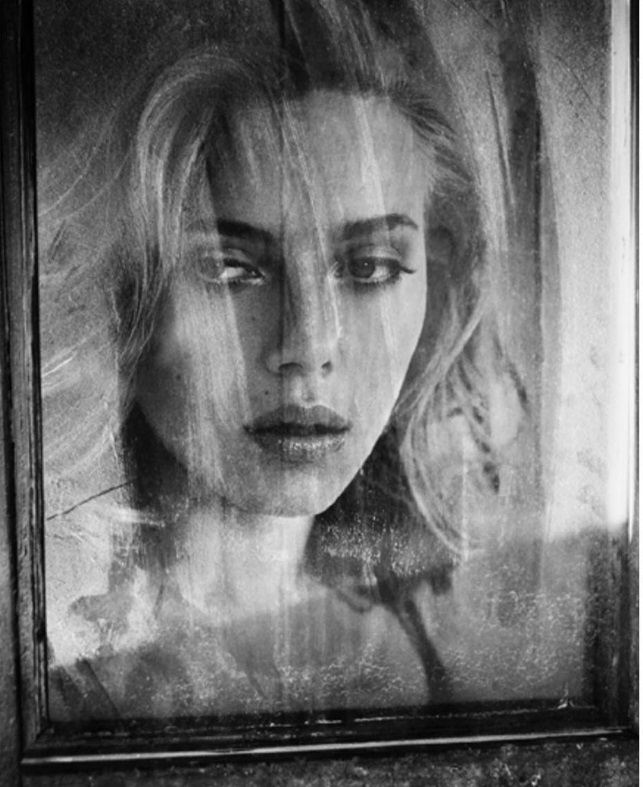
Peters continued:
“I want to tell stories with my photos. I’d like each visitor to this show to create his or her personal story for each image on display, to enter the pictures and live his or her own story. And to go back home thinking that what he or she has seen here was more like a riveting movie than a photography exhibition.
I photograph celebrities because it’s easier to identify with them, with the fictional life they show us on screen, and to dream about the fairytale-like luxury they live in. In fact, we don’t know about their real life, the dysfunctional families they often come from, the broken marriages, and their personal and family problems. They are like a beautiful bunch of flowers; when we’ve bought it and put it in a vase, it gladdens us with its colors, it adorns our house and fills it with its scent. But after a couple of days the flowers start to droop, their petals fall one by one till nothing remains of them, only decay. If you think about it, today only Meryl Streep still works constantly at seventy-five. And the other actors of her generation? Who remembers them anymore?
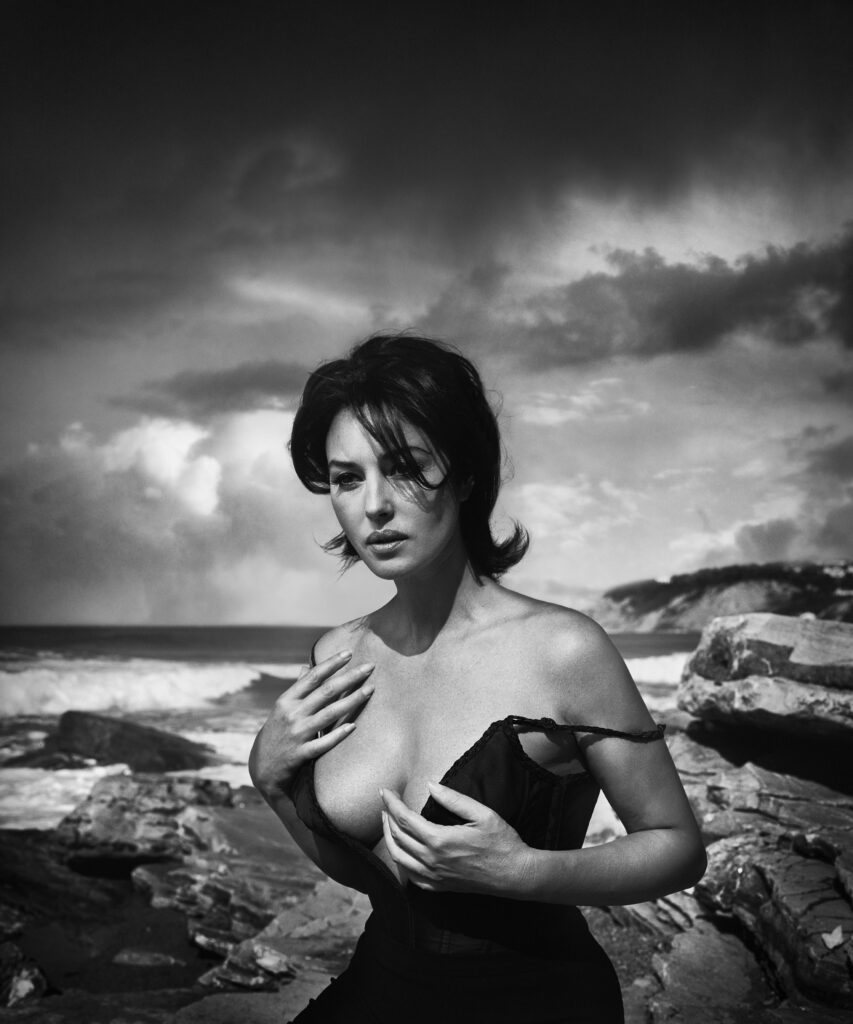
It isn’t easy to take pictures of actors, they’re very distrustful and highly concerned about their public image. The first time I was summoned by Monica Bellucci (whom I would eventually photograph in many other occasions), when we first met, she looked me up and down and said ‘You’re supposed to be the photographer? Do you even know how to take a photo?’
I rarely have the chance to meet my subjects and talk with them for a while before a photoshoot, to get to know them a little and organize the session better. They arrive and I shoot, that’s it.”
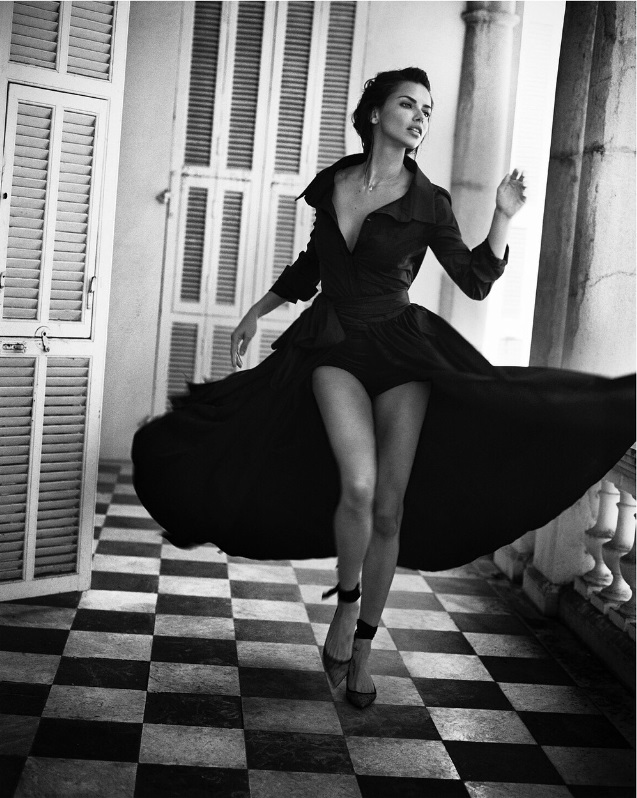
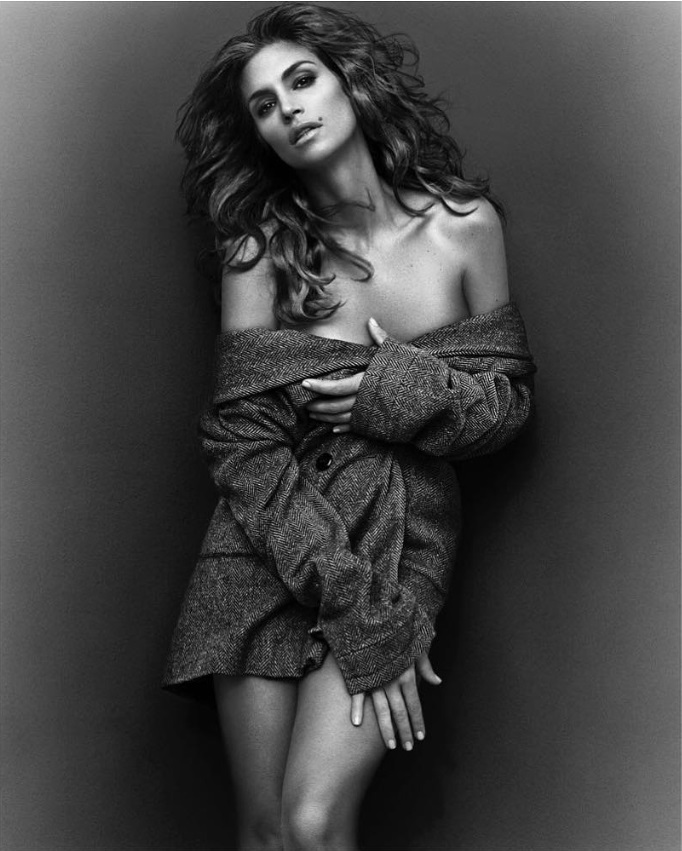
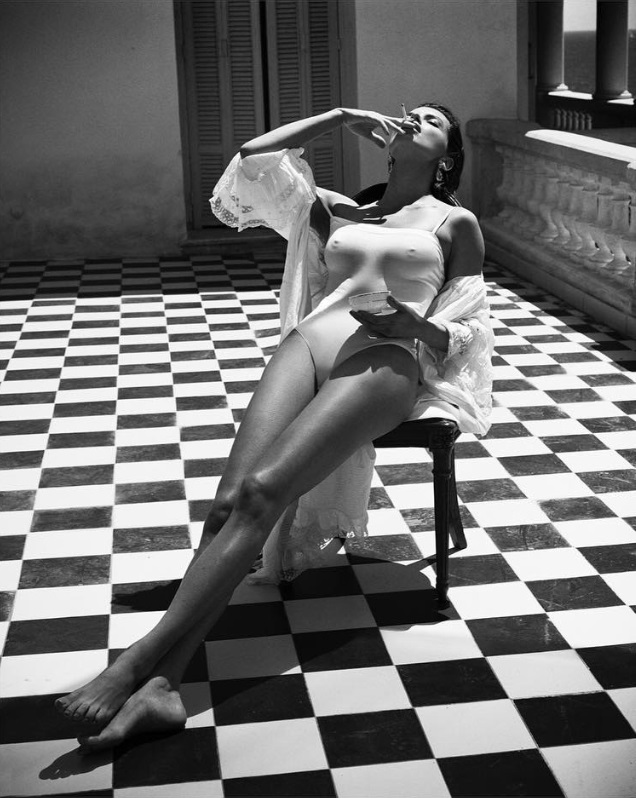
Peters also told us about the beginning of his career. and explained some technicalities of his work.
“I started taking pictures when I was ten years old, and never stopped! I can say it’s the only thing I know how to do. When, as a child, I would handle my little camera, setting the aperture, the focus, the exposure time, I’d feel important, a man, though I still had no idea that that was where my future lay.
My beginnings were difficult; I got by with badly paid jobs and was very poor. One day my agent called me up and said: ‘You’ve got three appointments today, call a cab and go.’ It was the first time I’d ever taken a taxi, I hadn’t had enough money before. That’s when I realized that perhaps something was changing in my life.
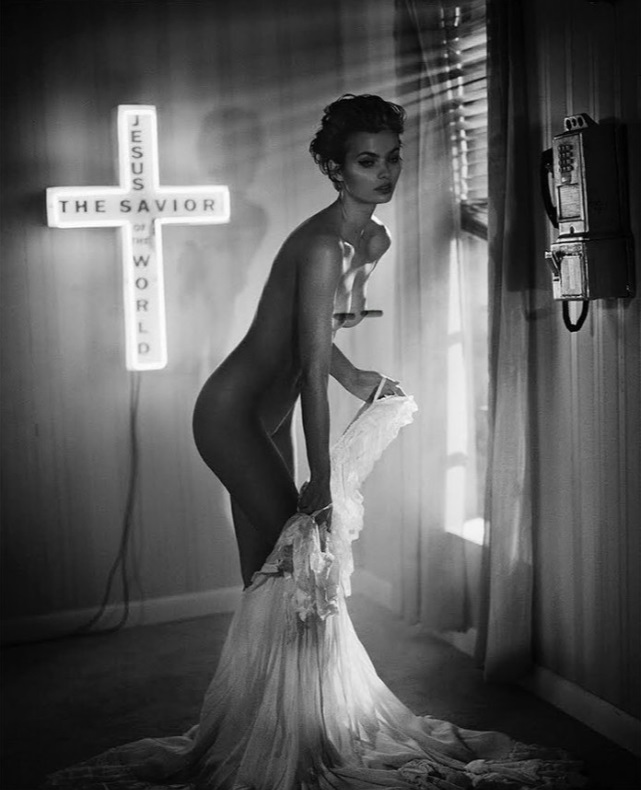
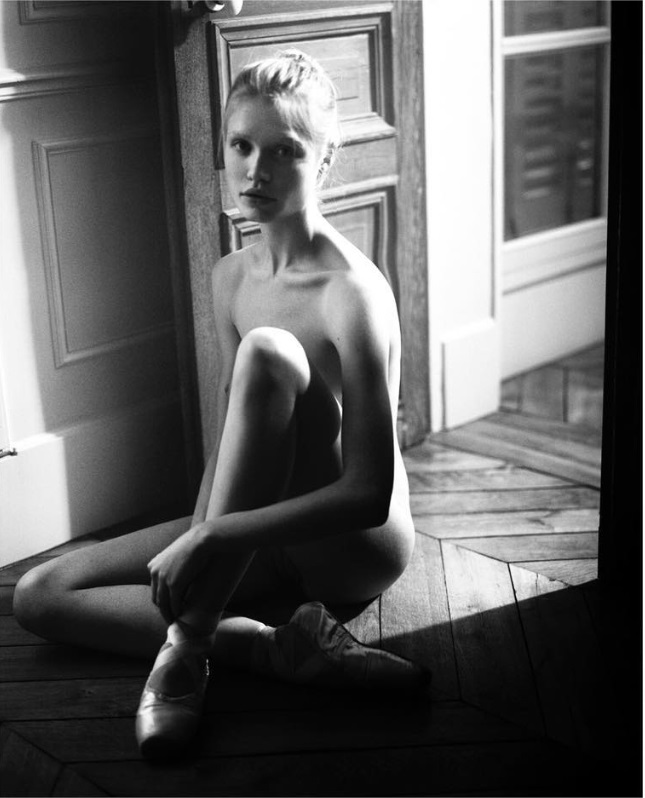
I’ve been using a Mamiya RZ Medium Format for many years now. It’s an analog camera, heavy and bulky, whose shutter clangs like an old fridge door, and I use just one lens. The camera takes 5×7 inch (13×18 cm) negatives, which make it possible to have large format prints. I use ISO 400 film; it’s as if each roll were different from the others, as if it had its own personality. I don’t shoot many photos at a time, and I wait a few days before developing and printing them to see what I’ve done. In the meantime, until I’ve got the first prints in my hands, I can’t sleep at night, imagining that I got all the pictures wrong and made a mess of them.
A lot of work goes into printing and post-production, which is when, with the help of my assistants, I obtain some of the effects that appear in the pictures.

For me, shooting on analog film is like sending a handwritten letter. Imagine a couple having a bad argument. If one of the two writes an email, the other receives it and replies quickly. Within an hours it’s all over. Everything is fast and immediate. Conversely, if one writes a letter by hand, it takes longer; one thinks it over, erases some words, reads it one more time, folds the sheet of paper, puts it in an envelope, sticks a stamp on it and drops it in a mailbox. The other receives the letter after a few days, read it, notices all the corrections that were made, and answers it. All this takes several days, just like a traditional analog photo does, from the moment it is shot to when it is printed. I’m interested in this slower and more meditated kind of work.”
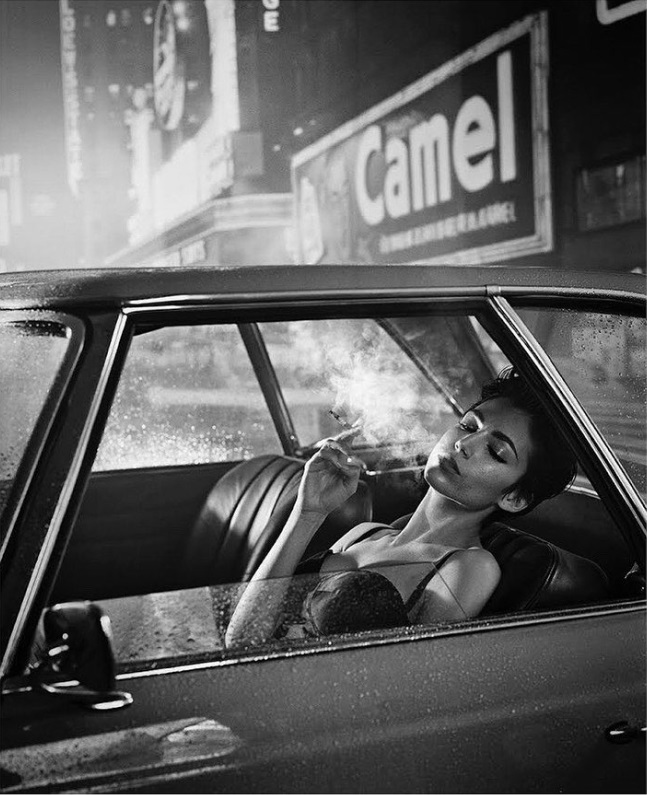
Peters then took us around to view his works.
“Now, dear visitors, let’s move on to the photos, hoping that, once their secrets have been explained, they won’t lose the sense of magic and mystery in your eyes.

This is a portrait of Natal’ja Vodianova, a Russian supermodel; I went to her apartment in Paris to photograph her. Her husband is Antoine Arnault, one of the richest men on the planet, and they live in the most unrestrained luxury. As a young girl, when she lived in Russia with her mother and sisters, she used to sell fruit at the market and was terribly poor. Before I started shooting, I asked her to recall something about her life in Russia, she thought about it a bit and this is the result.
I’d been contacted from New York to portray Charlize Theron. I was in Europe, and I looked for a studio that would be suitable for the shoot. I found a fabulous one, huge, super-equipped, ultra-modern. I was very exited about it, I felt like Steven Spielberg ready to shoot a movie. But this great studio had an insurmountable defect: it was in Brooklyn.
Anyway, I arrived in New York with the best intentions, ready to shoot, but Charlize’s assistants told me that she would never, ever go to Brooklyn. I tried to insist, but they were adamant. Brooklyn, no way! I had to settle for a much smaller studio near the hotel she was staying at. As I was preparing the set, she came out of the greenroom with this sheet draped around her, she’d done it herself, without anybody’s help, and I took this picture.

I then shot a set of portraits of her; in some she’s acting, in others not. Only two of them were sold to magazines, but I prefer to exhibit them all together, in sequence.

One day Monica Bellucci called me up and asked me if I wanted to photograph her, eight month pregnant, and again, after giving birth, with her newborn baby girl, Léonie. When she saw the shots she told me she liked them a lot, but didn’t allow me to exhibit them because they portrayed ‘very private moments.’ I insisted for years and she always said ‘no.’ Only last year, when this show was going to be held at Palazzo Reale [in Milan], did I manage to convince her, mainly by stressing the fact that it was going to be in Italy. A lot of time had gone by since I’d taken those photos, fifteen years more or less, her marriage to Vincent Cassel ended years ago, a lot of things have occurred in her life since then, so in the end she agreed to let me include them in the show.


Years ago, Esquire magazine featured a photo report on the seven sexiest women in the world; I was chosen to photograph Scarlet Johansson. She was pregnant at the time, and when she arrived at her hotel for the photoshoot in the morning she was nauseous, wasn’t feeling well. There was a mirror on the bed, I stood behind her and shot this photo.
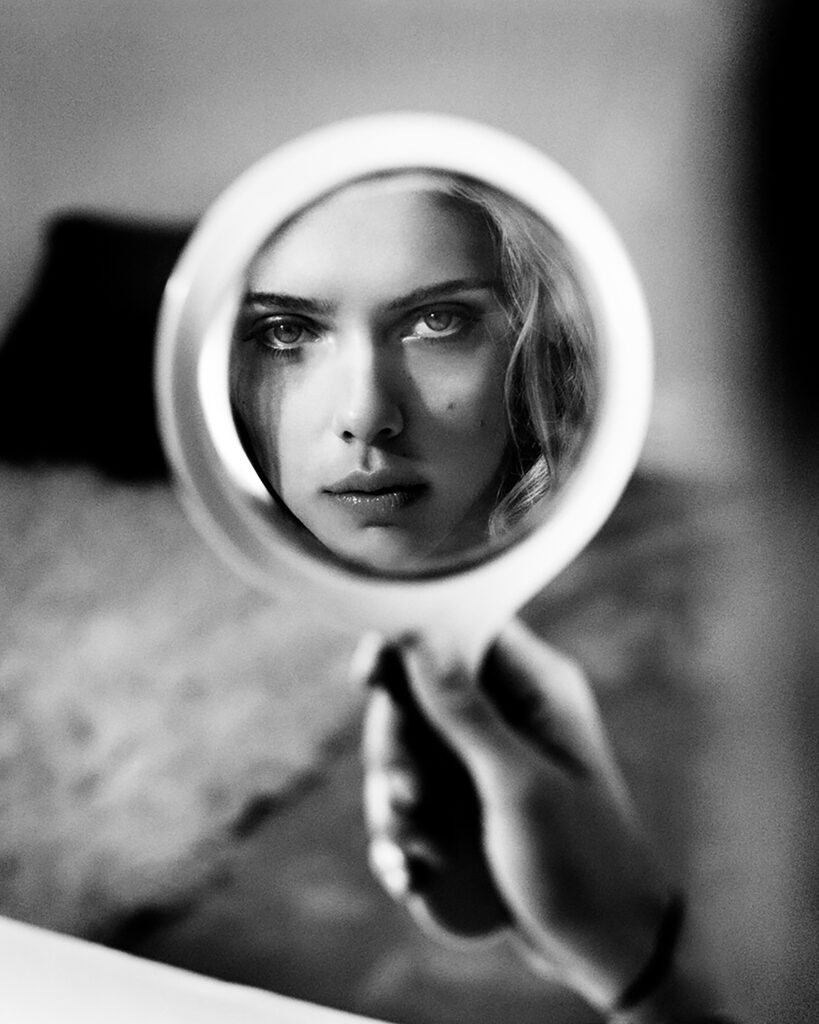
Photographing Angelia Jolie is like taking a picture of the president of the United States, she goes around in a limousine with tinted windows and is surrounded by a twenty bodyguards or so. When she was young she had problems with her parents, while the story of the end of her marriage to Brad Pitt is all over the newspapers, so privacy is understandably very important for her.

They called me to go to Cannes and gave me only two hours to shoot her portrait, assuring me she would arrive dressed and made up ready for the shoot. She was pregnant at the time, and showed up in a dress that looked like a wedding cake, with a huge, terrifying puffed-up hairdo. I couldn’t photograph her like that! I had an idea on how to hide Angelina’s dress and hair; I portrayed her in a mirror, so what I actually photographed was her reflection.”
“For this picture I ended up in jail!” Peters exclaimed in front of the picture of three female models, seen from behind as they climb up a column. “I was in Venice and I was taking shots for these Italian exhibitions. The problem was that the girls kept on slipping down the column and I couldn’t shoot fast enough. It was early in the morning and people were passing by with their shopping bags, on their way back from the market. When they saw the nude models their eyes opened wide, Mamma mia! In less than three minutes the Carabinieri [one of Italy’s police forces] arrived. They loaded us all into their car and took us to the police station. It took me several hours to explain who I was and what I was doing, but in the end they released us.
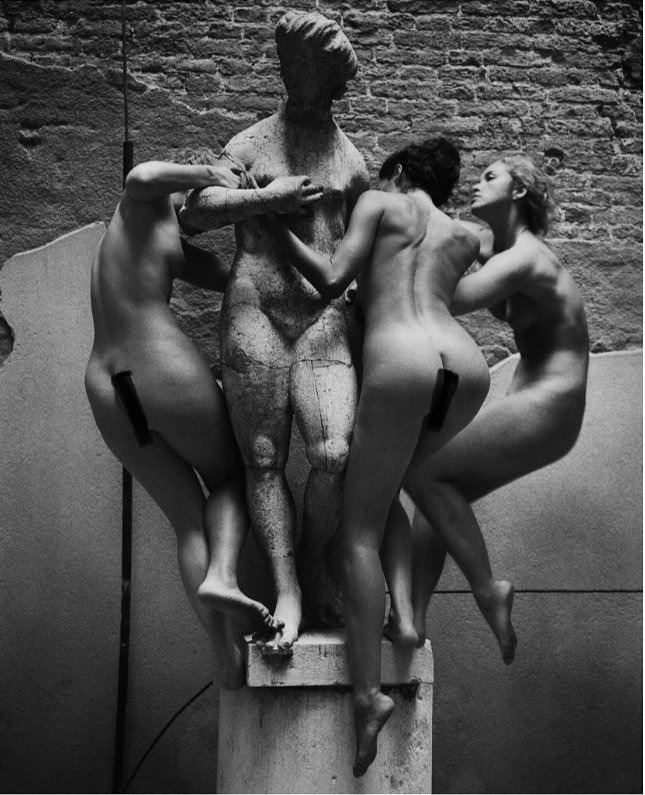

One day Playboy called me up and asked me to do a cover for them. I don’t work for this kind of magazine, I’m not interested in the voyeuristic aspect of the nude, but important people such as Marilyn Monroe and Helmut Newton have worked for Playboy, so I decided I might as well try. The idea for this photo came to me one night in London. I was walking down an empty narrow street, there was nobody around, just a sofa burning. It gave me a feeling of deep loneliness and fragility, which I held inside me for a long time. This feeling was the basis for a series of shots, some quite recent, that have fire as their motif.
For the flames we set fire to conduits full of flammable liquid. Firefighters were right there, extinguishers ready, and all of us, the whole crew, had spread ourselves with a special fireproof cream, even our ears and nostrils, because fire can get anywhere. Nobody was hurt, the model was unscathed. The photo was published, but they never called me again!



I happened to meet Djaja Baecke in Paris once. After exchanging the usual pleasantries, we realized that we both had no previous commitments, so I suggested we do a photoshoot. I leased a theater just outside the city for four hours, from six to ten in the morning, and shot a number of pictures. I’m particularly fond of this project, because I initiated it, nobody asked me to do it.

This picture was inspired by the horrific events that took place recently in Iran, where women who protested by removing their head scarves were brutally beaten and killed. The dog that attacks the model represents the obtuse violence of power.
To prepare for these photos, Victoria, the model, had made four dresses out of a fabric that wouldn’t come to pieces when torn. In the dress we had hidden some food for the dog, which was overseen by its trainer, and I got ready to shoot. But as I was about to do so, there was nobody to be seen in the camera’s viewfinder! The dog was chasing the model, who was running away, and I had to chase the two of them! You can’t see one of her hands, because it was being held by one of my assistants. In a way, I’m proud of this photo, because the model has the same expression of a Madonna in a painting in a church in the center of Rome, which I always go to see when I’m here, it’s one of my favorites.” Peters was referring to the church of Santissima Trinità degli Spagnoli, on Via Condotti. (The picture on exhibit is very recent, and hasn’t been added to Peters’s Instagram account yet; I thank my friend Antonella for giving me her own photo of it.)
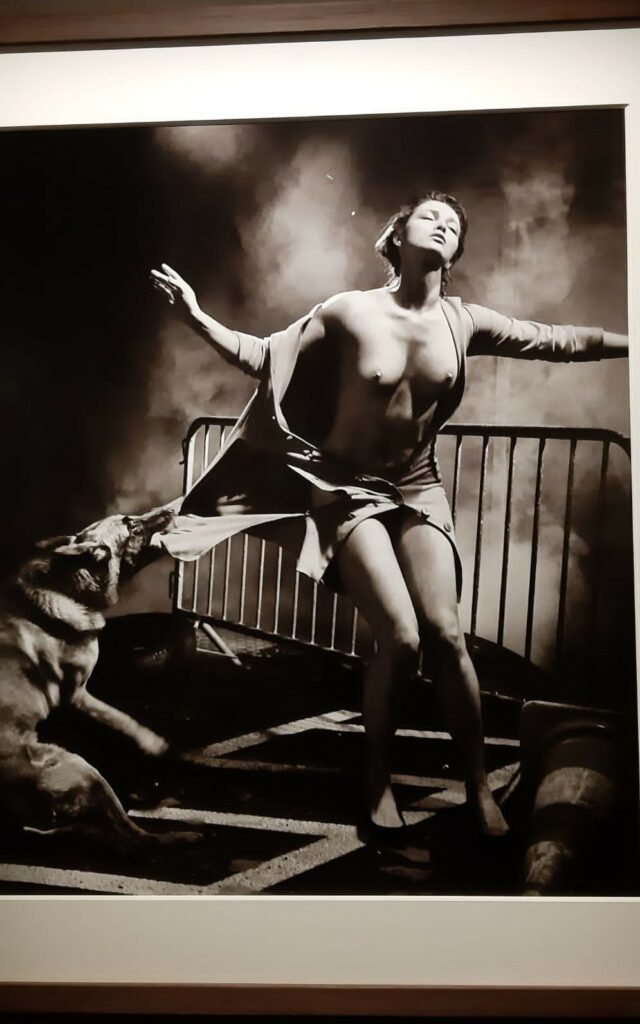
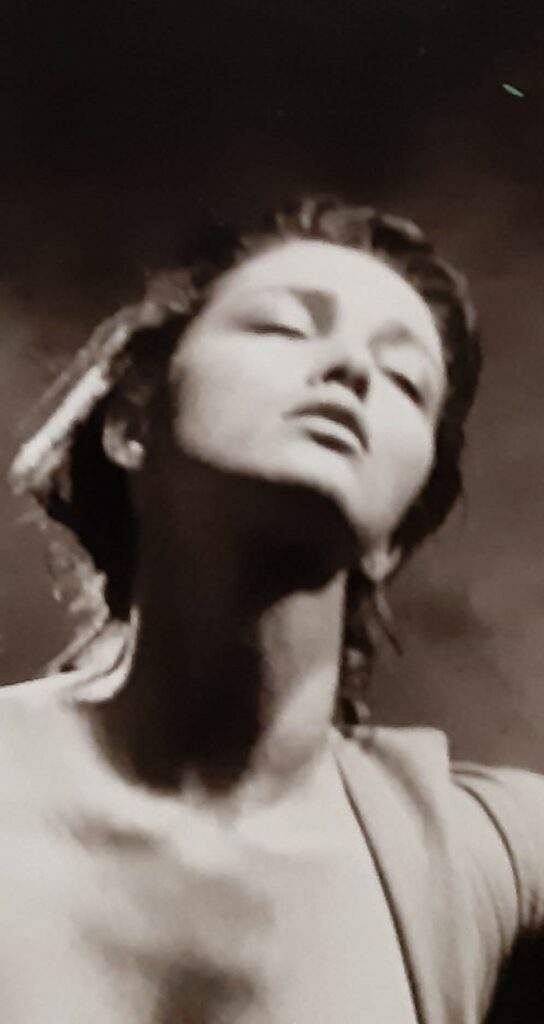
“As models, men are much more difficult to photograph than women. They always want to look fit and charming, like Mr. Black in Tarantino’s Reservoir Dogs. Moreover, actors are hardly ever willing to act in front of the camera; if you ask them to they get annoyed and become unpleasant.
Jane Fonda, on the other hand, was very nice to me. I was at her house and felt very intimidated. I asked her, ‘Ma’am, what would you like me to do?’, and she replied ‘You tell me what you want me to do, you’re the photographer!’.
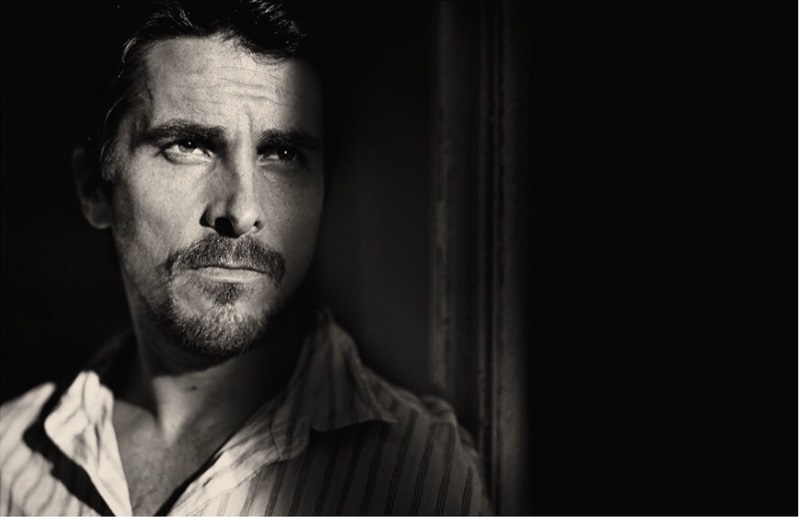
John Malkovich is a case apart. He’s not interested in being handsome, he’s not interested in being sexy or fit; however, he does enjoy acting in front of the camera. As I was shooting he launched into making a lot of faces, grimaces, bizarre gestures and movements. He moved like a marionette in front of the lens, but when the roll of film finished he’d stop abruptly. Once a new roll was loaded and the camera was ready to go, he’d start up again. Photographing him was a unique experience.”
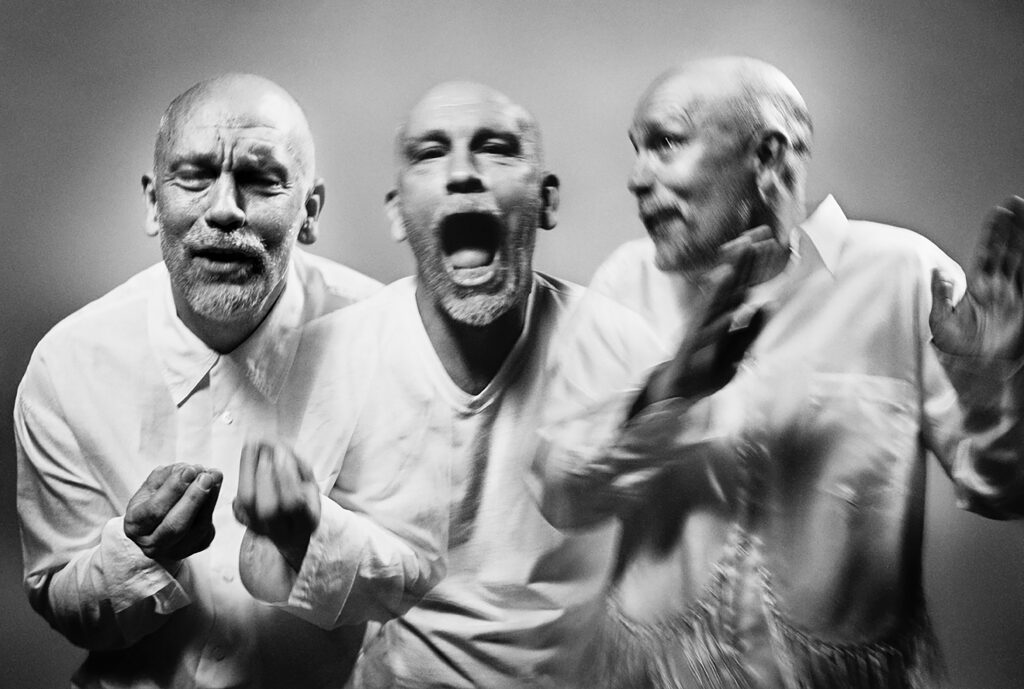
The tour ended here. Peters had talked non stop for a couple of hours, politely answering all the visitors’ questions (I’ve summarized his talk as best I could). The interview he granted me is published as part two of this article.
I hope I sparked in our readers the desire to see this exhibition, and made them eager to dive into and lose themselves in the worlds pictured in the wonderful images that adorn the walls of Palazzo Bonaparte-
June 2024
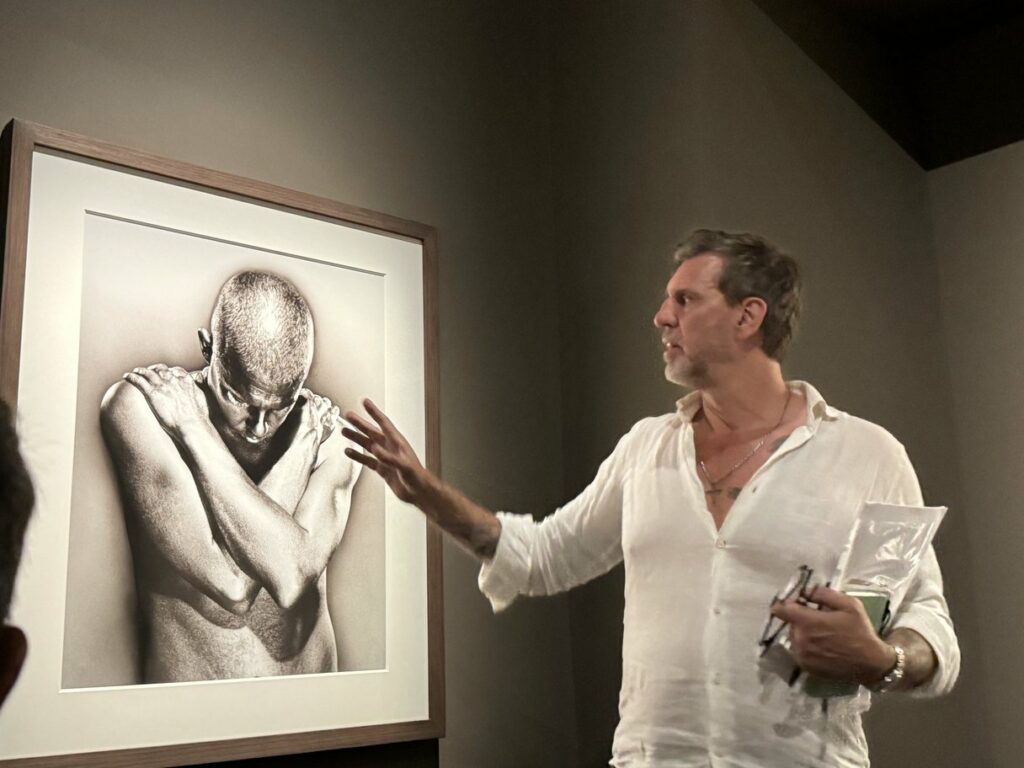
Some of the pictures were kindly provided by ARTHEMISIA (www.arthemisia.it), others come from Vincent Peters’s Instagram account @vincentpeters1.
My thanks to Priscilla M. for her advice and suggestions and to Serena Greci Green for translating this article from the Italian.
Our links:
https://www.cittamese.it/2024/07/11/vincent-peters-si-racconta-seconda-parte/
https://www.cittamese.it/2024/05/15/vincent-peters-visto-da-noi/
https://www.cittamese.it/2024/08/21/vincent-peters-in-rome-part-two-the-interview/
https://www.cittamese.it/2024/07/10/vincent-peters-si-racconta-prima-parte/

